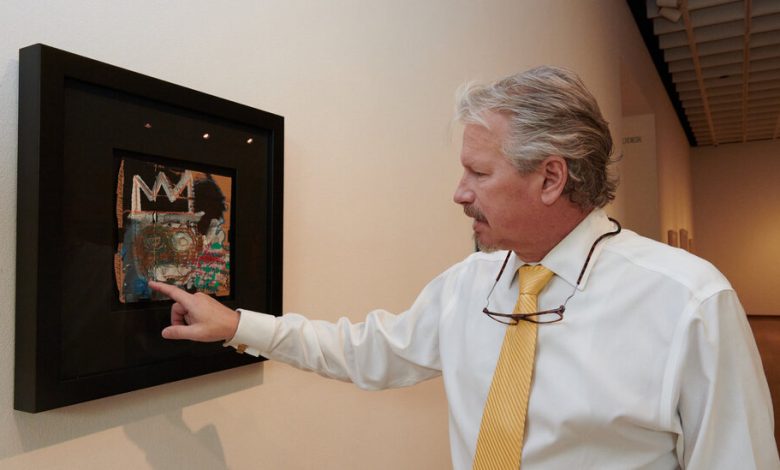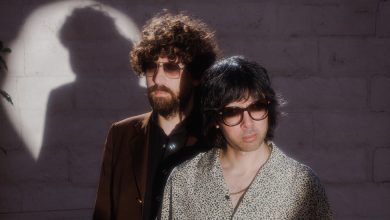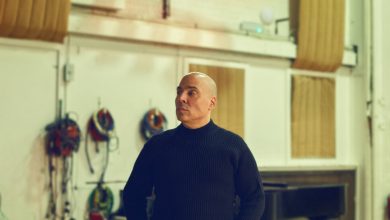Orlando Museum’s Ex-Leader Countersues, Insisting ‘Basquiats’ Are Real

The former leader of the Orlando Museum of Art has countersued the institution that fired him, insisting in court documents filed this week that the roughly two dozen works shown by the museum under his care were as advertised: newly discovered works by the celebrated artist Jean-Michel Basquiat.
The museum fired the former director, Aaron De Groft, last year after the Federal Bureau of Investigation seized the 25 works that had been attributed to Basquiat. It later sued him for fraud, conspiracy and various breaches after a Los Angeles auctioneer told authorities that he had helped create the artworks and that they were fake.
De Groft has not been implicated in wrongdoing by law enforcement. And he has rejected the museum’s assertion in its suit that he had sought to profit from a scheme, with the paintings’ owners, to exhibit the fake works at the museum in an effort to inflate their value before an eventual sale.
“Absolutely absurd,” De Groft said in a telephone interview. “All of the defendants, and me most of all, have been trashed for doing nothing wrong. And it’s destroyed my reputation.”
“I’m fighting back,” he added. “I’m going to war.”
In his counterclaim, De Groft noted that the museum’s board had ratified his decision to mount the show and said the board’s former chairwoman, Cynthia Brumback, had initially sought to conceal the F.B.I.’s investigation from the board as she sought legal representation to handle the matter. De Groft said he did not alert other board members out of fear of angering Brumback and losing his job.
De Groft’s lawsuit was filed on Tuesday, five days after the museum said in court papers that it was “engaged in settlement negotiations” with the former director and his co-defendants, who are the co-owners of the paintings. De Groft said in the interview that he and his co-defendants had rejected the museum’s initial settlement offer and that he was unaware of additional negotiations.
“OMA’s lawsuit is a transparent public relations stunt intended to save face and to wrongfully make Defendant a scapegoat for the F.B.I.’s seizure of the 25 paintings,” De Groft, who is representing himself in the case, wrote in his counterclaim
“Defendant did his job professionally and in good faith, created a spectacular Exhibition that garnered rave reviews, set attendance records, made a substantial profit,” he continued, “and is not deserving of the obloquy heaped upon him by OMA’s Complaint.”
The Orlando Museum of Art declined to comment.
Brumback did not respond to a request for comment. The Times previously reported that before the opening of the exhibition, several museum staffers who had become skeptical about the authenticity of the purported Basquiat paintings met with Brumback to voice their concerns; they were told to defer to De Groft’s judgment and threatened with termination if they continued to raise the matter, The Times reported.
In its own filings, the museum has called the case a “truth stranger than fiction.” The museum’s court papers cite emails and text messages that it says depict De Groft’s interest in profiting from the sale of the artworks that he could arrange to have exhibited at the museum. In one 2022 email, he appeared to demand “30 percent” from the owner of a Titian, according to the court papers. In the same email, he muses about soon retiring “with mazeratis and Ferraris.”
De Groft said he did not recall writing the 2022 email about “30 percent” and fancy cars, adding that “there’s nothing illegal about mouthing off.”
The owners have defended the authenticity of the works, asserting they had been embraced as genuine by multiple Basquiat experts. But in court papers filed last year, federal investigators cited a De Groft email in which he appeared to warn an expert hired by the owners to assess the artworks when she expressed concern that her report would be used to promote them as authentic.
“You want us to put out there you got $60 grand to write this?” De Groft wrote in response, according to the court papers. “Ok then. Shut up. You took the money. Stop being holier than thou.”
De Groft said in the interview that his correspondence with the scholar had been taken out of the context of a broader argument. “I apologize,” he said. “You should never be rude to anybody.”
One element of the authenticity dispute has been whether the paintings were ever owned by a now-deceased television screenwriter, Thad Mumford. The owners say Mumford left the works in a storage locker whose contents were ultimately sold.
One of the owners of the works has said in court papers that there is evidence that Mumford told at least six people about his ownership of the works. But the F.B.I. had spoken to Mumford before his death in 2018, and he had said he never owned a Basquiat.
Still, De Groft said in the interview that he would stake his reputation on the scrutinized works being real Basquiats.
“They’re absolutely authentic,” he said. “I did my due diligence.”



